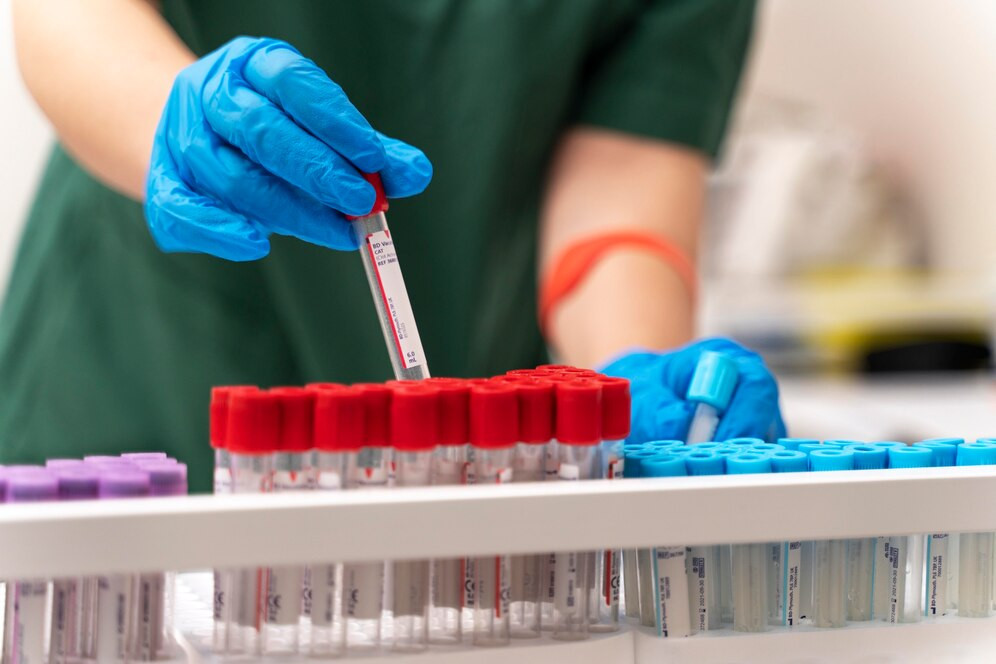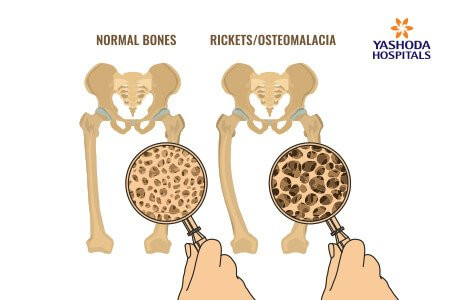Definition
Vitamin D deficiency is a condition characterized by inadequate levels of vitamin D. Vitamin D is an essential nutrient necessary for maintaining good health. This vitamin helps regulate calcium balance and the formation and maintenance of bone structure. Calcium and phosphate minerals are essential for bone formation and maintaining healthy tissue in the body. Furthermore, vitamin D also contributes to the function of the neurological, musculoskeletal, and immune systems.
There are many sources of vitamin D, some of which are sunlight exposure, nutritious foods, and dietary supplements.
We also have articles on vitamin D supplements that you can read here.
Causes
Generally, two primary factors contribute to vitamin D deficiency:
Inadequate sun exposure or diet
Vitamin D is produced in the body in response to sunlight exposure. You are at risk of having a deficiency in vitamin D if you:
- Work from home or remain indoors for an extended period
- Work or live in a northern region of the globe
- Wear long-sleeved clothing or a head covering
- Elderly
- Have darker skin tones
- Consume a diet deficient in vitamin D
Vitamin D Malabsorption
Specific medical problems that may affect the absorption of vitamin D within the body such as:
- Conditions such as Crohn's disease or celiac disease, which include inflammation in the digestive system, hinder the ability of the intestines or gastrointestinal tract to absorb vitamin D adequately
- An elevated body mass index (BMI) above 30 or being overweight is linked to decreased levels of vitamin D. Adipocytes will retain vitamin D, preventing its release. Individuals with obesity often want higher dosages of vitamin D supplementation.
- Kidney and liver disease can diminish the quantities of enzymes necessary for the body to metabolize vitamin D effectively. An insufficiency of this enzyme results in diminished levels of bioavailable vitamin D within your body
- Specific pharmacological treatments that impact vitamin D metabolism, such as some laxatives, corticosteroids, anticonvulsants, cholesterol-lowering agents, or anti-tuberculosis medications
- Gastric bypass surgery, which aims to decrease the size of the stomach and/or small intestine for weight loss, can also impede the body's ability to absorb essential vitamins, nutrients, and minerals adequately. Regular medical check-ups are crucial for individuals who have undergone weight loss surgery, as they enable doctors to monitor vitamin D levels and other essential minerals closely.
Risk Factor
Several factors may increase the risk of vitamin D deficiency, particularly:
Age
The capacity of the skin to synthesize vitamin D decreases with age, thereby making individuals aged 65 and above particularly susceptible to dietary inadequacies. Suppose the mother's postpartum diet lacks sufficient vitamin D-rich foods. In that case, the breast milk provided to the baby might contain a limited quantity of vitamin D. Consequently, the infant is also susceptible to vitamin D deficiency.
Skin Color
Dark-skinned individuals have more difficulty gaining the same quantity of vitamin D from sunlight as lighter-skinned individuals. This is because dark-skinned individuals have more pigmentation. Melanin, an inhibitor of vitamin D production, can reduce the body's ability to produce it.
Mobility
Fewer hours of sunshine exposure may be expected from those who spend most of their time indoors, do not venture out very often (such as those residing in institutions or other facilities), or work from home. They are more likely to suffer from vitamin D deficiency because their skin may not get enough sun exposure, which reduces their vitamin D production.
Symptoms
Children with a severe vitamin D deficiency may experience rickets or a reduction in bone strength. Rickets is an exceptionally uncommon condition. Children with a minor vitamin D deficiency may experience weakness, discomfort, and/or muscle soreness. However, under extreme conditions, the growth of bones in children may be impacted.
Among the symptoms that may manifest as rickets are the following:
- Loss of bone density results in decreased bone strength and curvature
- Stunted growth results in a lower stature than peers of the same age
- Progressive muscle weakening
- Skeletal pain
- Malformation of the joints
- Impairments in the child's gait
Vitamin D insufficiency can cause weariness and muscle weakness in adults. Bones are at risk of experiencing pain as well. Low vitamin D levels may compromise the immune system, increasing susceptibility to infection. Nevertheless, you may not exhibit any indications or manifestations of vitamin D deficiency.
Diagnosis
For diagnosis, a doctor should evaluate vitamin D levels in the following situations:
- Certain medical conditions affect you
- Personal factors contribute to an increased susceptibility to vitamin D deficiency
- Manifestations predicted to be associated with a deficiency in vitamin D were identified
Vitamin D levels in the body can be measured through a blood test. Two categories of examination can be conducted, specifically:
- Calcidiol or 25-hydroxy vitamin D (25-OH D)
- Calcitriol or 1,25-dihydroxy vitamin D
The calcidiol examination is frequently performed due to its higher concentration in the body and more prolonged presence in the blood. The typical range for calcidiol levels in the body is 20 to 50 ng/mL (nanograms per milliliter). A vitamin D insufficiency is indicated when the levels drop below 12 ng/mL.
Management
The objective of therapy and prevention of vitamin D deficiency is to achieve and sustain optimal vitamin D levels in your body. The doctor will recommend foods that are rich in vitamin D, such as:
- Salmon, tuna, mackerel, and sardines
- Mold
- Egg yolk
- Cod liver oil
- Foods that have extra vitamin D include:
- Soy milk, almond milk, and cow's milk
- Dairy products, such as yogurt
- Cereal
It is recommended that you sunbathe outside in the morning regularly. Vitamin D supplements may be administered by a physician in specific conditions based on the patient's symptoms. Consult your physician to determine whether or not you require vitamin supplementation and, if so, how much you should take.
Complications
Chronic or severe vitamin D deficiency may impact the absorption of calcium and phosphate, leading to compromised calcium absorption. Hypocalcemia, or low blood calcium levels, may stimulate the parathyroid glands to release more parathyroid hormone. This is a compensatory mechanism to counteract the low calcium levels in the body and ensure that blood calcium levels remain within the normal range.
Furthermore, an insufficiency of calcium and phosphate can lead to osteomalacia, a condition characterized by bone fragility, resulting in an increased risk of bone demineralization and fractures. Children's bones may develop deformities and experience impaired growth.
Prevention
To effectively avoid vitamin D deficiency, it is crucial to provide sufficient vitamin D intake through daily dietary consumption and appropriate exposure to sunlight. But exercise caution when exposed to the sun for extended periods without applying sunscreen. Excessive sun exposure increases the risk of skin cancer. Try sunbathing for ten to thirty minutes to decrease the risk of exposure to excessive sunlight.
Your daily vitamin D requirement is proportional to your age. The following are the age-specific vitamin D recommendations for nutritional sufficiency:
- Infants 0–12 months: 400 IU
- 1-70 years: 600 IU
- ≥71 years: 800 IU
- Pregnant and breastfeeding women: 600 IU
When to see a doctor?
Vitamin D deficiency is an uncommon but severe health problem. However, medical attention is recommended if you or your child experience any symptoms related to the muscles or bones, such as weak muscles, bone pain, or being shorter than others, even when neither parent is short. Pregnant women should check with their doctors regularly to monitor their condition and any changes.
Want to know more information about other diseases? Click here!
- dr Hanifa Rahma
Vitamin D deficiency: Causes, symptoms & treatment (2022) Cleveland Clinic. Available at: https://my.clevelandclinic.org/health/diseases/15050-vitamin-d-vitamin-d-deficiency (Accessed: February 16, 2023).
Vitamin D deficiency: 6 causes, common symptoms & health risks (2022) WebMD. WebMD. Available at: https://www.webmd.com/diet/guide/vitamin-d-deficiency (Accessed: February 16, 2023).
Wartenberg, L. (2022) Vitamin D deficiency: Symptoms, treatments, and causes, Healthline. Healthline Media. Available at: https://www.healthline.com/nutrition/vitamin-d-deficiency-symptoms (Accessed: February 16, 2023).












